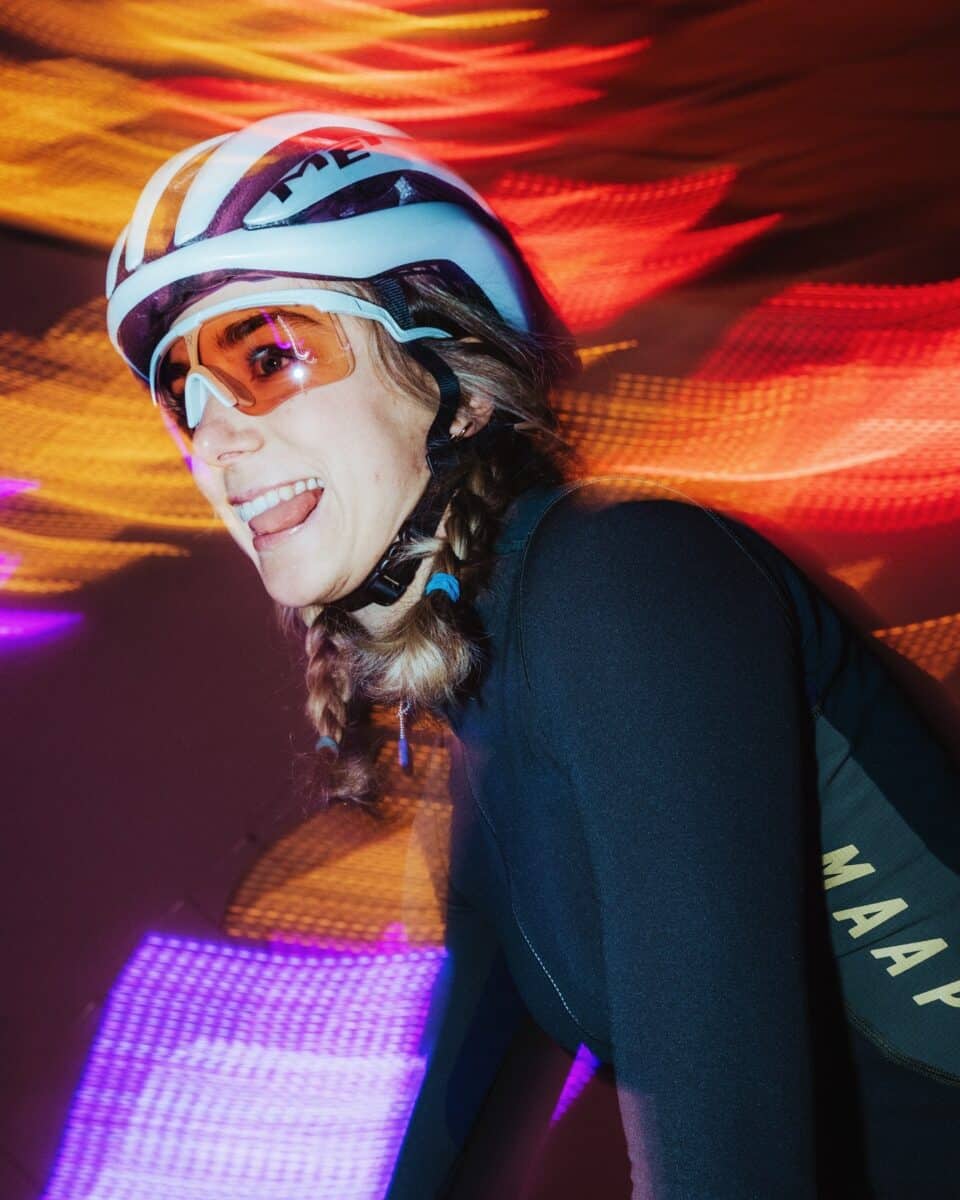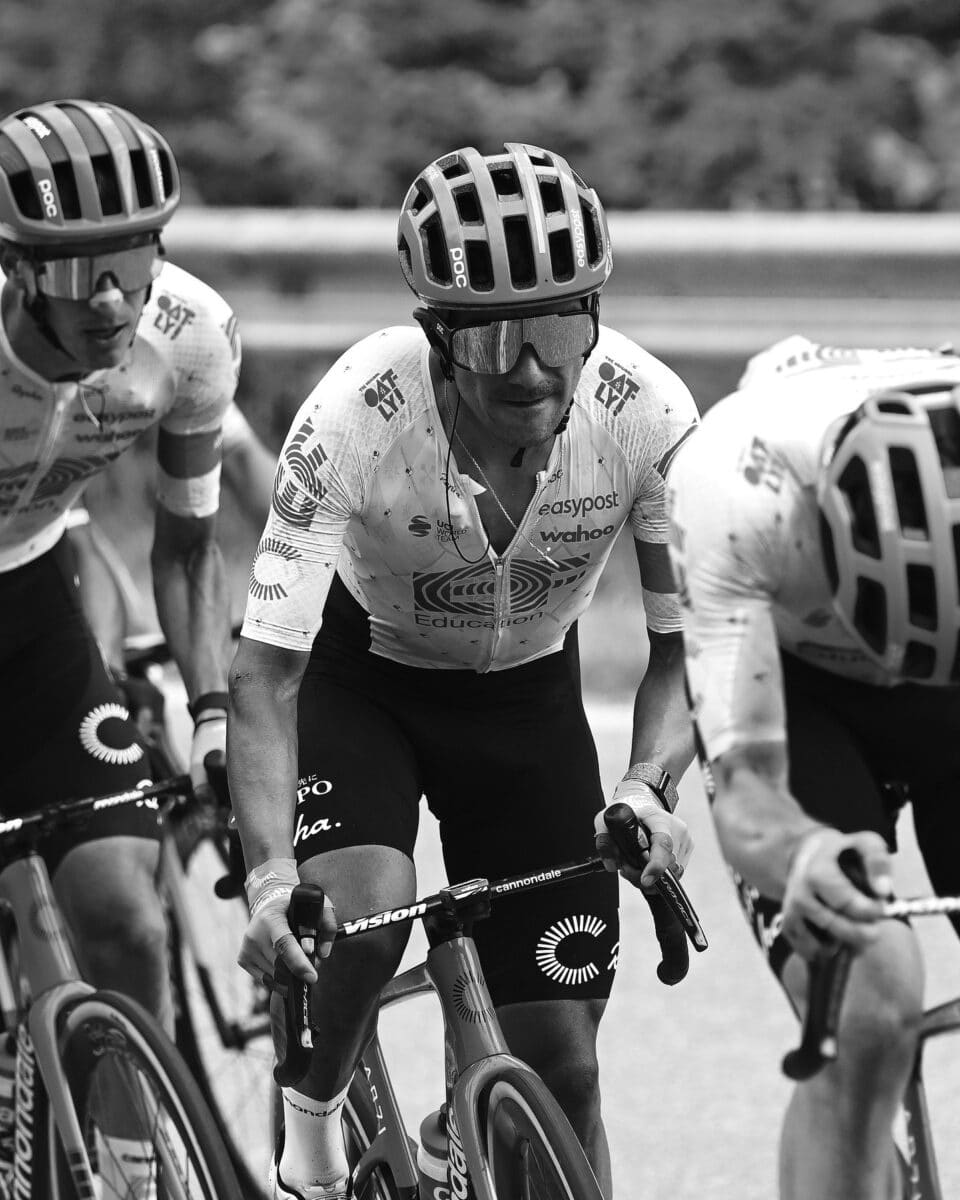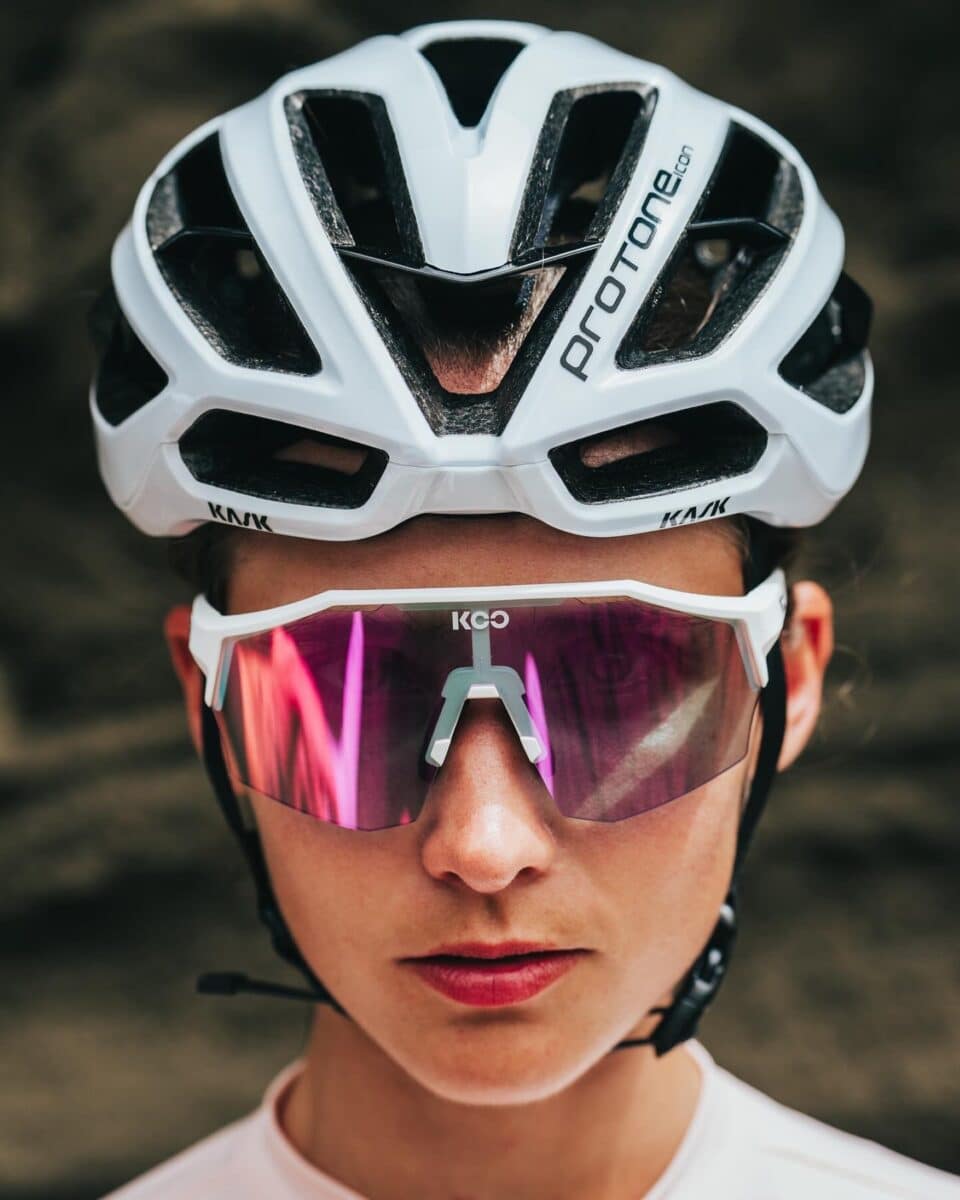My riding experience changed completely after testing photochromic cycling glasses for over 200 hours in different conditions. These smart lenses adapt to light changes - they stay almost clear while riding through shaded forests and turn dark in bright sunlight. We tested three different pairs, the Koo Demos, POC Devour and Alba Optics Delta. We put each pair through tough sun-to-rain transitions to find the best cycling glasses that work in real-life riding.
Photochromic bike glasses work better than polarized cycling sunglasses that stay dark all the time. They're perfect for long rides that go from day to night. These glasses don't just block harmful UV rays - they also keep insects and road debris away from your eyes, which helps a lot when you're speeding downhill. This piece will help you find the right glasses if you're tired of carrying multiple pairs or squinting through tunnels with regular shades.

My first ride with these sunglasses left me amazed by their adaptive performance. The technology behind photochromic cycling glasses fascinated me. These innovative eyewear solutions are changing the game for cyclists who ride in different conditions.
The lenses in photochromic cycling sunglasses contain special light-sensitive molecules. Silver halide, chloride, or organic photochromic dyes sit embedded in or on the lens surface. The sort of thing I love about these smart lenses is how they adjust their tint based on surrounding light conditions.
While it seems like magic, the science works in an elegant way. UV radiation breaks the molecular bonds of these specialized molecules. They move freely and absorb more light, which darkens the lens. The molecules reform their original bonds as UV exposure drops, and the lens returns to its clearer state.
Different manufacturers use their own unique compounds. To give just one example, plastic photochromic lenses use carbon-based compounds. These react faster than glass lenses, which makes them perfect for cyclists moving between sunny roads and shaded forests. Plastic lenses are generally better for cyclists as well as they are less likely to break and cause injury in the event of a crash.
UV light powers the activation process of photochromic cycling glasses, not visible light. This difference matters because the lenses respond to harmful rays that can damage your eyes rather than just brightness. So these lenses give you 100% UVA and UVB protection.
Most photochromic cycling lenses take 30-60 seconds to darken with UV exposure. The clearing process needs a bit more time—about 2-3 minutes when moving from bright to lower light conditions. Temperature plays a role in transition speed. Cold weather makes the lenses darker but slower to clear. Warm conditions speed up clearing but might reduce darkening slightly. Seasonal riders and those bombing in and out of forested single track at high speed should think about this variable.
Quality photochromic cycling glasses offer a tint range from Category 0 (virtually clear) to Category 3 (dark sunglasses). This range will give a rider perfect visibility from dawn rides to midday sun.
These bike glasses are a great way to get several advantages:
On top of that, these glasses work best where light changes often, like wooded trails next to open fields or mountain routes with changing exposures. They are the ultimate 2-in-1 solution - they protect your eyes from insects, debris, and wind in low light and become effective sunglasses as brightness increases—without any rider input.

Let me share what I learned about the differences between polarized and photochromic lenses. This knowledge will help you pick the right cycling eyewear that matches your riding style.
Polarized cycling sunglasses are great at cutting down glare from reflective surfaces. They filter out horizontal light waves that create glare when sunlight hits wet roads, water, or shiny objects. These specialized filters give you crystal clear vision on bright, sunny days and your eyes won't get as tired during long rides.
Photochromic cycling glasses work differently - they adapt to changing conditions. The lenses change their darkness based on UV exposure. This automatic adjustment gives you the best vision in any light condition. I found this feature most helpful during rides that go between open roads and tree-covered paths.
The main difference between these technologies comes down to what they do best. Polarized lenses work better at cutting glare in bright environments, especially around water or in the mountains. Photochromic lenses shine when light conditions keep changing, making them perfect for long rides and unpredictable weather.
My biggest issue with polarized cycling glasses involves digital screens. The lenses can make it hard to read LCD displays because of how they filter light. This becomes a real pain when you need to check your cycling computer or phone during rides. You might even need to take off your glasses just to see your stats or navigation.
Photochromic lenses don't have this problem. They adjust their darkness without polarization, so you can see digital screens clearly throughout your ride. This feature alone might make photochromic lenses worth it if you like keeping track of things like heart rate, power output, or navigation.
Polarized lenses show their weakness in changing light conditions. The constant dark tint can be a problem in tunnels, shady forest sections, or sudden weather changes. The lenses stay dark and might make it hard to spot road hazards in dim conditions.
Photochromic cycling glasses handle mixed lighting much better. The lenses start getting lighter as soon as UV exposure drops, so you can see better in tunnels and shaded spots. The change isn't instant - it takes about 30-60 seconds to darken and 2-3 minutes to clear up completely - but this adaptability really helps on varied terrain.
Daily commuters who ride in steady daylight might find polarized lenses good enough. But riders who tackle different routes with changing light conditions will get more value from photochromic cycling glasses without giving up protection or clarity.
Your typical riding environment should guide your choice. Polarized lenses might be your best bet if you mostly ride in bright, glare-heavy areas with steady lighting. But if your routes mix sunshine and shade, photochromic cycling glasses will give you the flexibility you need to see clearly throughout your ride.

My 200-hour test of three leading photochromic cycling glasses went beyond manufacturer claims. These real-life trials showed differences in performance that lab testing couldn't match.
Light changes on rides made transition speed a crucial factor. The lenses tested turned dark in 30-60 seconds under bright sunlight. The switch back to clear took longer—generally 2-3 minutes in shaded spots and up to 5 min in some cases. Riders notice this difference most on forest trails with patches of sun and shade. In heavy overhang with technical trails underneath, this could be an issue versus regular more moderately tinted sunglasses.
Temperature played a big role in how well these lenses worked. Cold weather made lenses darker but slower to clear. The photochromic effect worked well even on cloudy days since UV rays pass through clouds. The Alba Optics Delta Photochromic lens turned dark in about thirty seconds in full sun. They needed about two minutes to clear up in dense forest shade, but extended slightly beyond that in freezing temperatures.
Fog is the biggest problem for cycling eyewear in wet weather. The best photochromic cycling glasses use hydrophobic coatings and vents to fix this issue. Models with water-resistant treatments let droplets roll off instead of blocking vision.
Glasses with good airflow worked best in heavy rain. Smart vent placement kept lenses clear even during sweaty uphill climbs. Koo’s Demos photochromic glasses stood out with excellent fog resistance thanks to their four ventilation ports increasing the airflow.
Long rides proved comfort matters most. Great cycling sunglasses stay secure without pressure points. Adjustable nose pads help fit different face shapes. Of course, this has little to do with the lens itself, but you need to ensure you find glasses that fit regardless of the lens specifications.
Light frames help riders avoid fatigue on long trips. Rubber grips on ears and nose keep glasses in place even with heavy sweating—crucial for fast downhills.
The glasses we tested worked differently with various helmets. For example, Kask, the helmet brand, has partnered with Koo to help streamline how the sunglasses interact with the helmet. This design stops pressure points where glasses meet helmet straps.
Some frames leave enough space to avoid hitting helmet edges in aggressive positions. Open-top frames help with airflow and fit better under helmet brims. Many new helmets now come with special spots and grips made just for sunglasses.
Our longitudinal study revealed three photochromic cycling glasses that stood out as top performers in 2025. Each pair brings something special to the table for different riding styles.
The Alba Optics Delta with the VZUM F-Lens Flamingo delivers bold style with performance-focused details. Inspired by 80s racing heritage, the full-coverage lens design offers a striking look and exceptional field of view. The Flamingo F-Lens features a photochromic pink tint that adjusts subtly to changing light, enhancing contrast and boosting visibility in low light or overcast conditions.
Weighing just under 30g, the Delta provides a stable, comfortable fit thanks to its lightweight Tr90 frame and rubber grips at the nose and temples. The lens has a soft, rose-to-purple transition and isn't as dark as some others on the market, making it a great option for dawn patrols, cloudy rides, or forested gravel routes where high contrast and visibility are key.
While the Delta doesn’t offer the fastest light adaptation or the darkest tint range, riders loved the natural color enhancement and the stylish flair it brings. It’s an excellent choice for riders who want a unique aesthetic with just enough photochromic performance for variable-light rides.
The Koo Demos stands out with its solid frame construction and ultra-wide panoramic lens that delivers strong coverage without feeling bulky. The photochromic lens shifts smoothly between clear and dark grey—ideal for early morning rollouts through to full-sun conditions.
Fit and ventilation are where the Demos shines. The anti-slip temples and adjustable folding arms lock in comfortably, even over hours of riding. Vents above the lens reduce fogging, which testers found effective during humid climbs. Koo includes a protective case, cleaning cloth, and optional clear lens for night riding.
The POC Devour Photochromic offers goggle-like coverage with the breathability of sunglasses. With a lens that shifts from Cat 0 to Cat 3, they handle forest shade and open roads with equal ease. The Clarity lens tech (developed with Carl Zeiss) provides outstanding contrast and detail in mixed lighting.
These are among the most protective options on the market, with a full-wrap shield and adjustable temples and nosepiece to dial in fit. At 40g, they're heavier than others, but riders loved the secure feel on rough terrain. The lens coating resists smudges and fog, and POC includes a soft pouch and hard case for travel.

My thorough testing of multiple photochromic options has revealed which riders can benefit the most from this adaptive eyewear technology.
Photochromic cycling glasses are a great fit for commuters who ride through different environments. These glasses adapt smoothly between dark and bright conditions, which means you won't need to switch eyewear or take them off. This feature really helps when you're cycling through cities with changing sunlight and building shadows. Long-distance cyclists love these glasses because they provide clear vision no matter how the light changes during their rides.
These lenses work great for endurance cyclists who start at dawn and finish later in the day. The automatic adjustments let you focus on your ride instead of your eyewear, especially during those long century rides where comfort matters most. On top of that, most photochromic models are lightweight, which helps reduce fatigue on long rides.
Mountain bikers get amazing benefits from photochromic technology. As one manufacturer notes, "MTB cyclists are the ones who get the most out of photochromic sunglasses because they ride terrains where light conditions change quickly and radically in a matter of minutes." These adaptive lenses become essential when you're moving between forest shadows and open clearings.
Riders who face unpredictable weather also love these versatile glasses. They work better than standard lenses in light rain and provide better visibility without fogging. Some photochromic lens colours boost contrast and definition, which helps cyclists see better in mist or fog.
Photochromic cycling glasses aren't the best choice if you only ride at night. While these lenses can reach 80-87% light transmission in low light, they're nowhere near the 90-92% VLT you get with dedicated clear lenses. This small difference matters a lot in complete darkness. Clear lenses remain the best option for night riders who need maximum visibility in low light conditions.
UV activation powers photochromic technology, but most car windshields block UV rays. So these lenses behave differently when you're driving compared to open-air cycling. If you need one pair for living life, photochromic may not be the way to go, but do you really want to wear your oversized cycling style glasses to social events?
We spent 200 hours testing photochromic cycling glasses in all kinds of conditions. These glasses proved to be one of the best investments a serious cyclist can make. The adaptive lenses naturally switch from almost clear for shady forest trails to dark tinted for bright, open roads. You won't need to carry multiple pairs anymore.
The Alba Optics Delta and Koo Demos showed amazing optical clarity in our field tests. They protect your eyes from UV rays, insects, and road debris. The technology works well in most temperatures and adapts quickly enough for real-life riding from sunrise to sunset.
Comparing these with polarized lenses makes the choice pretty clear. Polarized glasses are great at cutting glare, especially on water, but they can't match how photochromic lenses adapt to changing light. These glasses also let you see LCD screens clearly - a huge plus for riders who like to check their cycling computers.
Sure, photochromic cycling glasses aren't cheap, but they may save you on extra frames and lenses for bike commuters, long-distance cyclists, and anyone riding different terrains.
I take my photochromic glasses on every ride now, no matter what the weather looks like or where I'm going.
Happy riding!
